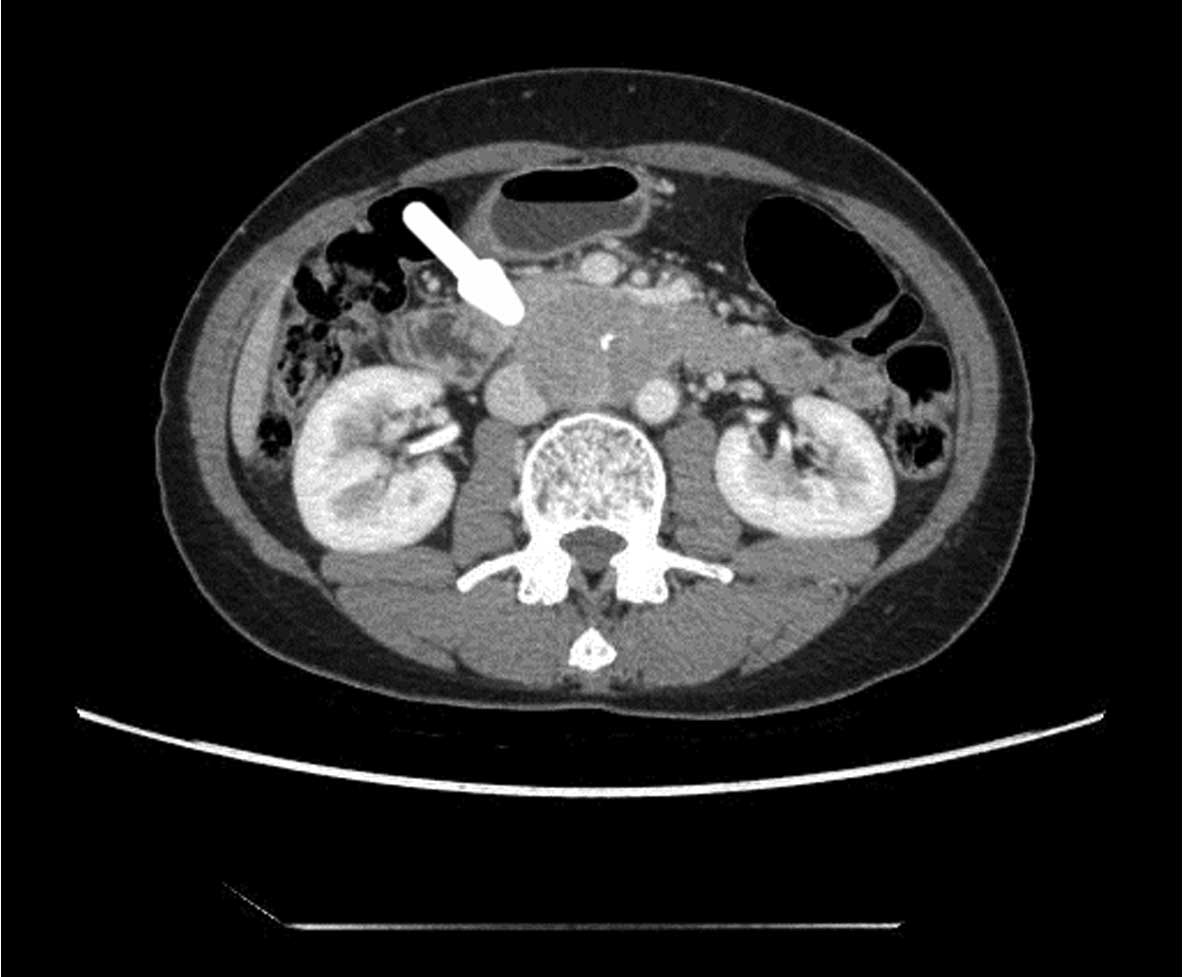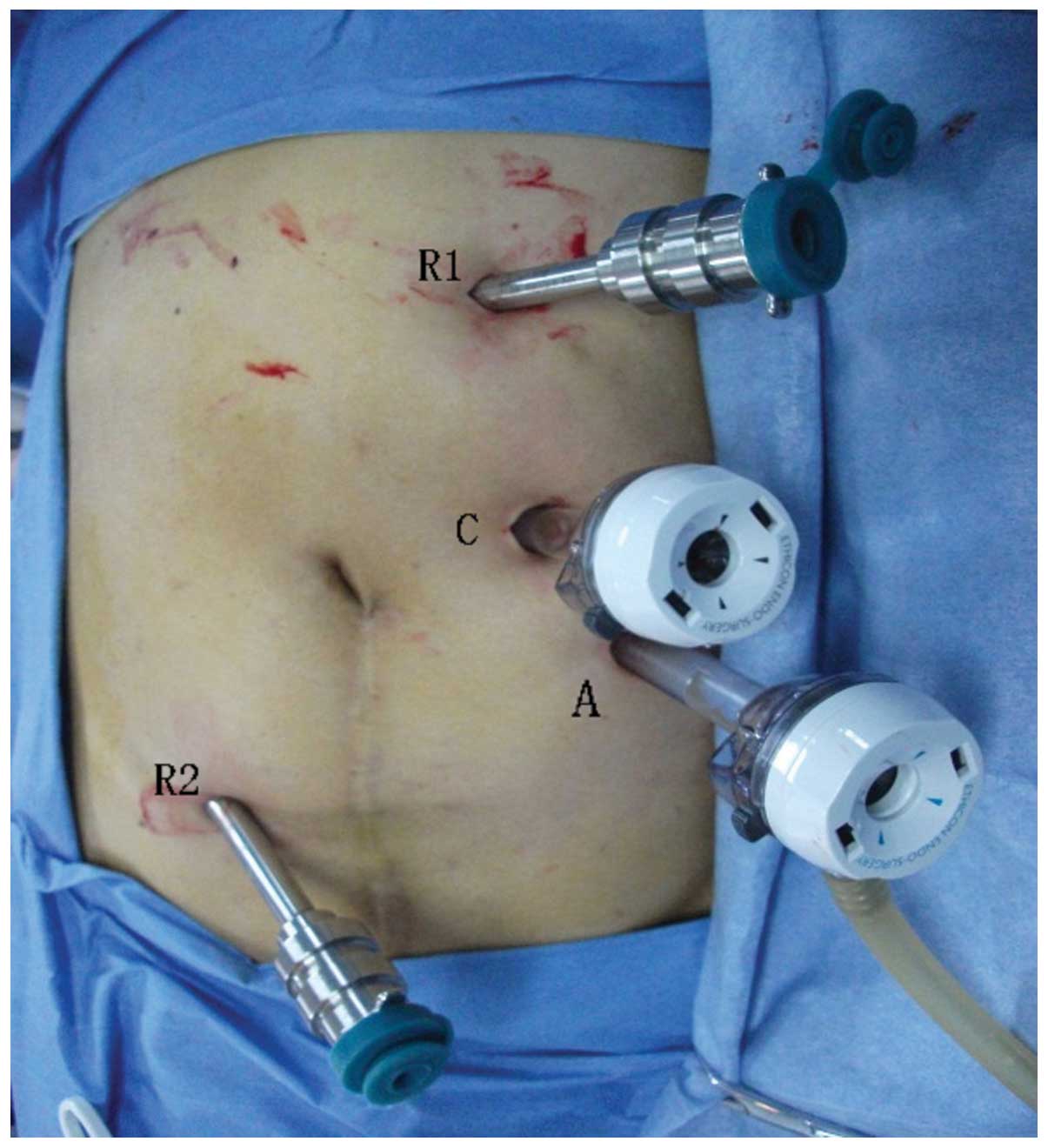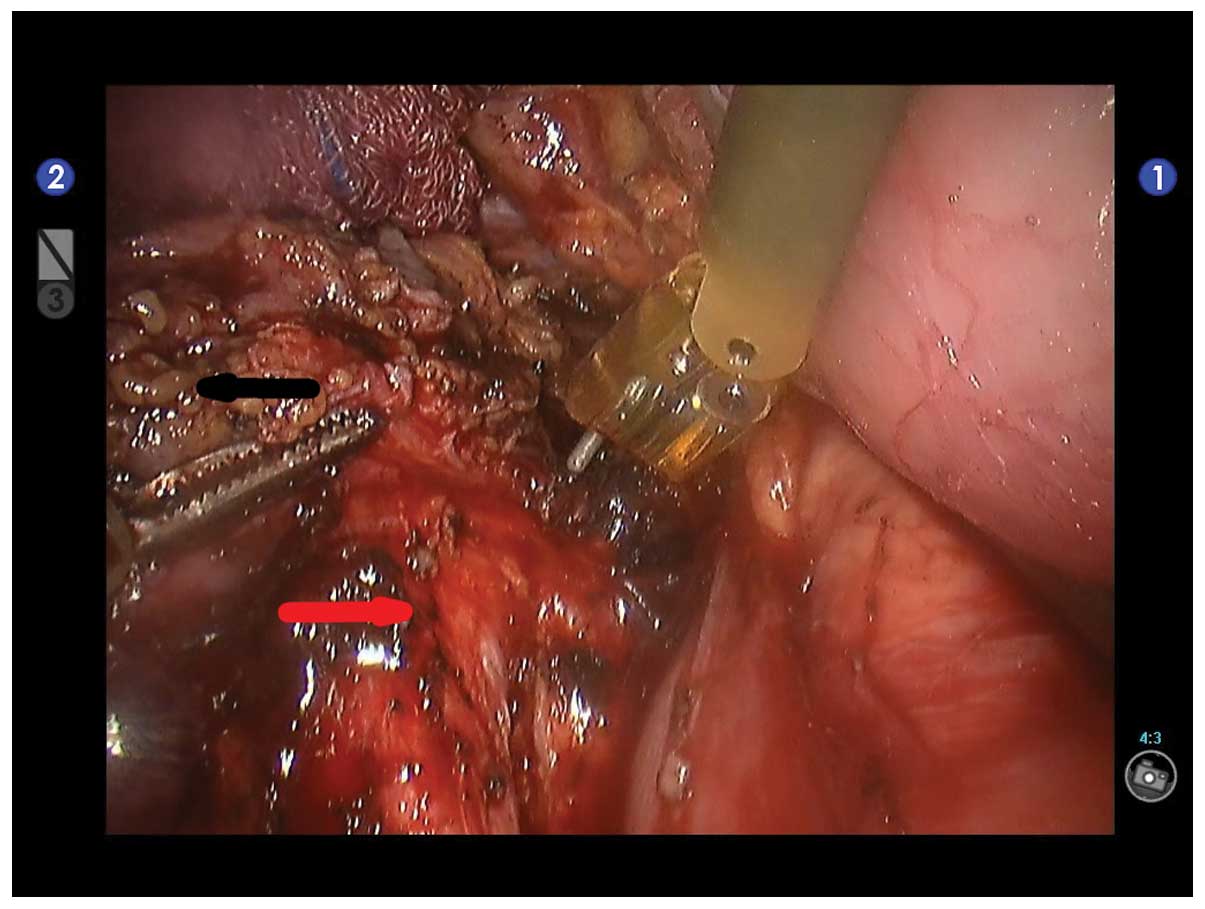Preliminary experience of the robot‑assisted laparoscopic excision of a retroperitoneal mass: A case report
- Authors:
- Published online on: September 12, 2014 https://doi.org/10.3892/ol.2014.2533
- Pages: 2399-2402
Metrics: Total
Views: 0 (Spandidos Publications: | PMC Statistics: )
Total PDF Downloads: 0 (Spandidos Publications: | PMC Statistics: )
Abstract
The aim of the present study was to report the initial clinical experience of adopting the da Vinci Surgical System (Intuitive Surgical, Inc., Sunnyvale, CA, USA) to perform a retroperitoneal tumor resection. The patient was a 56‑year‑old female who presented with a five‑year history of hypertension. Abdominal dynamic computed tomography (CT) and positron emission tomography‑CT scans revealed a mass measuring ~6 cm in diameter that was located anterior to the abdominal aorta, and between the abdominal aorta and the inferior vena cava (at the level of the third lumbar vertebra). The tumor was excised via a five‑port, robot‑assisted, transperitoneal laparoscopic approach. Careful dissection of the tumor away from the abdominal aorta and the inferior vena cava was accomplished without resulting in major vascular injury. There were no complications and the patient was discharged in a good condition on the eleventh postoperative day. Pathological analysis of a tumor specimen demonstrated a benign pheochromocytoma (PHEO). During the three‑month follow‑up, no recurrence was identified through CT scans or measurement of the patient's endocrine hormone levels. Thus, the da Vinci robot‑assisted laparoscopic system may be safely employed in the treatment of extra‑adrenal PHEOs that occur in difficult locations for which a laparoscopic surgical excision may be challenging.













